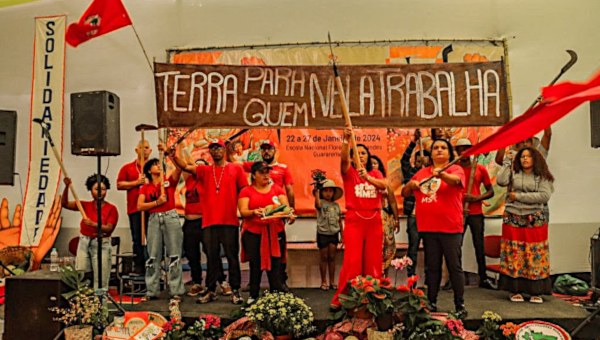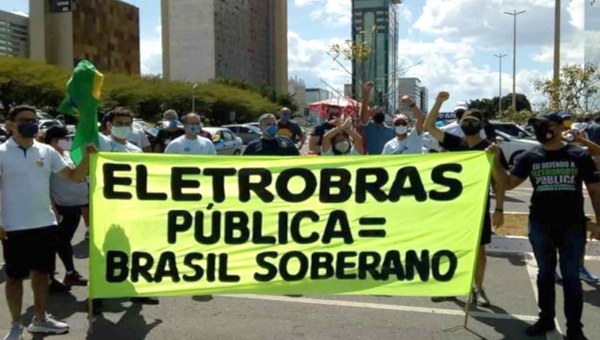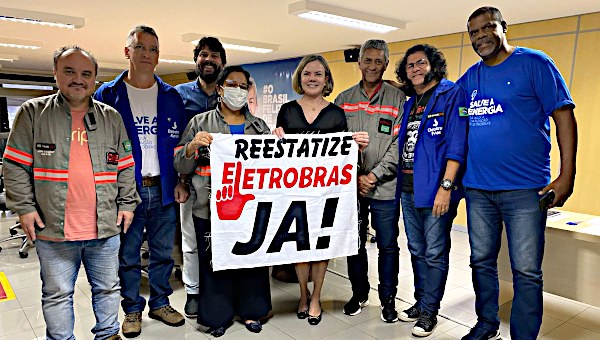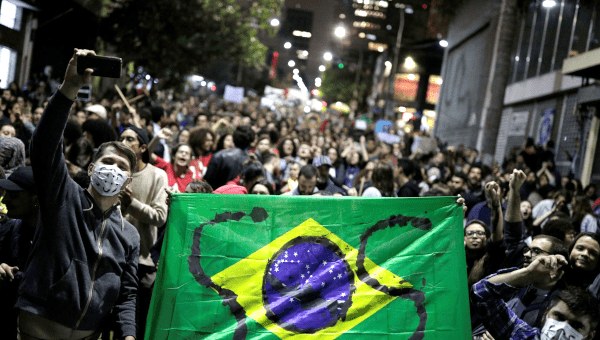Brazil Round One: Bolsonaro Outperforms Expectations
Voters in Brazil will be heading to the polls again on October 30 for a runoff presidential election after failing to reward any candidate with over 50 percent of the vote on October 2.
The presumptive front runner, Lula Da Silva of the Workers’ Party (PT), placed first with 48 percent, representing a margin of 6.2 million votes over his incumbent competitor, Jair Bolsonaro of the Liberal Party (PL), who polled second with 43 percent. Simone Tebet of the Brazilian Democratic Movement Party (MDB) and Ciro Gomes of the Democratic Labour Party (PDT) scored 4 and 3 percent respectively.
It is significant that Bolsonaro fared better than most election surveys forecasted. And in several elections for state governors, candidates aligned with Bolsonaro also did much better than opinion polls suggested.
Claudio Castro from Bolsonaro’s PL won the state of Rio de Janeiro with a large margin of 58 percent. In the state of São Paulo, Tarcisio Freitas (PL), who trailed in the opinion surveys, scored 42 percent against Fernando Haddad from the PT with 37 percent. This race for governor in São Paulo will also be decided in the second round.
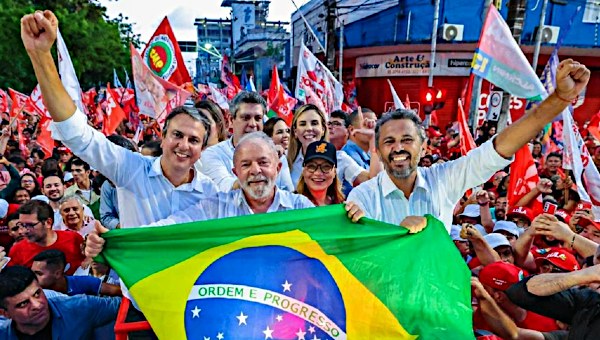
Bolsonaro and Allies Consolidate Their Support
It is already a commonplace assumption that the next Lula government, if elected, will have little room for maneuver due to the overall relationship of forces. This has been confirmed in a somewhat radicalized manner by the results from the first round. The traditional center-right has been wiped out making the result of the second round of elections hard to predict.
As one commentator stated, “Lula is an island in an extreme right-wing sea.” After four years of Bolsonaro, fascism has taken hold in the Brazilian population but in an unequal manner geographically speaking.
Lula won most of the states of the North and all the states of the Northeast, often with large margins. He received 70 percent in Bahia, a state with 15 million inhabitants, the fourth most populous, compared to Bolsonaro’s 24 percent. The picture is repeated in the states of Maranhão, Ceará, and Pernambuco where Lula gathered 69, 66, and 65 percent of the votes respectively, while Bolsonaro received 26, 25, and 30 percent respectively.
Bolsonaro was victorious in the agrarian Center-West, the Southeast, and the South with one exception: Minas Gerais, the second most populous state, which Lula won by a five percent margin. In the 17-million-strong state of Rio de Janeiro, Bolsonaro won with 51 percent against Lula’s 41 percent, while in the state of São Paulo, by far the most populous state with 44 million people, Bolsonaro won with 48 against 41 percent for Lula.
Bolsonaro also won in the Southern states of Santa Catarina and Paraná with 62 and 55 percent of the votes respectively, against Lula’s respective 30 and 36 percent. Results were similar in the agrarian state of Mato Grosso in the Center-West with 60 percent for Bolsonaro and 34 percent for Lula.
Overall, Lula gained votes in all states when compared with votes garnered by Fernando Haddad, the PT’s presidential candidate in the first round of elections in 2018. Bolsonaro meanwhile increased his number of votes in eleven states when compared with 2018.
Lula also received the largest-ever number of votes for a presidential candidate in the first round, while Bolsonaro bested his 2018 performance by 1.7 million votes. Abstention was at 20 percent, roughly the same level as four years previous.
Opinion Poll Failures
There are different approaches to explaining why Bolsonaro fared better than expected. Lula’s performance did match polling expectations, yet, Ciro Gomes from the center-left received far fewer votes than projected. Gomes’s projected share of support was estimated at between seven and nine percent, yet he only received three percent. So, to whom did these votes go? Some explanations assume that many voters changed their minds at the last minute and shifted their support from Gomes to Bolsonaro, which would explain the difference between projections and the actual results.
The mainstream expectation was that potential voters for Gomes would change their minds at the last minute in favour of Lula. One reading of events holds that many voters did indeed switch their support to Lula, but this then means that Lula has already mobilized all potential supporters in the first round, suggesting a bleak perspective for the second round.
Another theory maintains that polls were wrong all along, with results in some of the federal states confirming this. Expectations built up by opinion surveys announced that Fernando Haddad would lead the race for governor in the state of São Paulo by a large margin, yet he came in second.
Polls also reported Marcio França from the left-wing Socialist Party of Brazil (PSB) leading the race for a senate seat in São Paulo by a big margin, but it was instead won by Marcos Pontes, a former astronaut and science minister in the Bolsonaro government.
These discrepancies tell us that polling firms systematically underestimated the potential votes for candidates aligned with Bolsonaro, and overestimated potential votes for left-wing candidates, especially in the important states of Rio de Janeiro and São Paulo.
Various interpretations exist as to why pollsters got it wrong. This is especially interesting, since polls from the 2018 elections were generally accurate, indicating that there is no built-in default with relation to right-wing voters. Polling firms may not have taken into account demographic changes in the electorate that have occurred since the planned census for 2020 was delayed due to the pandemic. Other factors might also include hesitance among certain parts of the population to participate in polls and last-minute political mobilizations conducted by evangelical churches that support Bolsonaro.
What is certain is that a fierce battle will take place in the second round for the 4.9 million votes cast in the first for Simone Tebet and the 3.5 million for Ciro Gomes. Tebet has endorsed Lula for the second round. Interestingly, Gomes’s party, the PDT, announced ‘programmatic support’ for Lula, while Gomes said he supports the decision of his party, without mentioning Lula’s name.
There are an additional 600,000 voters who gave their support to conservative Soraya Thronicke from the party Brazil Union (União Brasil – UB) and 560,000 voters who favoured the neoliberal Felipe D’Avila from the New Party (Partido Novo – PN). Thronicke herself will not support either candidate in the second round, as both are ‘gangsters’ in her opinion. Nevertheless, these votes are very likely to go to Bolsonaro in the second round.
The 120,000 votes for smaller leftist parties like Popular Unity (UP), the Brazilian Communist Party (PCB), and the Unified Socialist Workers’ Party (PSTU) could provide important support for Lula. Lula is setting his hopes on people who did not participate in the first round, as these tend to be from the poor strata that are considered his voter base.
Parliament, Senate, and Federal States
Results for Parliament, the Senate, and state-level elections indicate that the overall scenario is quite favourable for Bolsonaro. The composition of Parliament among the left, center, and right has changed little. While a few shifts occurred within these blocs due to party realignments, the overall balance is stable, i.e., unfavourable for the left.
Bolsonaro’s PL is now the largest parliamentary group in 24 years with 99 of 513 seats. The Workers Party, together with its allies from the Green Party and the Communist Party of Brazil (PCdoB), comprises a bloc of 79 seats, an increase of 11 seats. A second left bloc, which includes the Socialism and Liberty Party (PSOL) and the left-ecological Rede de Sustentabilidade (Sustainability Network), now has 14 seats, a gain of four.
Nevertheless, since center-left parties like the PSB lost ten seats and the PDT lost two seats, the overall balance for the left remains little changed. Among center-right parties, Brazil Union (UB) gained eight seats and is now the third largest group with 59 seats. Within the same political current, the Brazilian Democratic Movement (MDB) has gained five and now has 42 seats, while the Social Democratic Party (PSD) lost four, also coming in at 42 seats.
The traditional center-right party, the Brazilian Social Democratic Party (PSDB), formed a common group with Ciudadanos (Citizens) but were reduced to 18 seats, a loss of eleven. Other large party groups who support the Bolsonaro government, like the PP (Progressistas), have 47 seats, and the Republicanos, 42 seats. Taken together, Bolsonaro will have an allied group of 188 deputies in Parliament, by far the largest group.
Of the 81 seats making up the Senate, 27 of these were contested on October 2, of which 16 went to allies of Bolsonaro, eight to allies of Lula and three to independent candidates. One of these three was Sérgio Moro, who quit in 2020 as Bolsonaro’s Minister of Interior and gave up his presidential bid for the current elections but gained a comfortable Senate seat for his home state of Paraná. Parties aligned with Bolsonaro now command 30 of the 81 senatorial seats, centrist parties command 38 seats, and center-left parties control just 13.
Regarding state governors, 15 of the 27 elections were decided in the first round. Of these, eight went to allies of Bolsonaro and other right-wing candidates compatible with his agenda. These included the neoliberal candidate Romeu Zema in the second most populous state of Minas Gerais with 57 percent, Claudio Castro in third largest state of Rio de Janeiro with 58 percent. Other right-wing victories took place in the smaller states of Acre, Mato Grosso, Roraima, Tocantins, and Goiás.
Candidates of the left won in four states of the Northeast: Fatima Bezarra (PT) in Rio Grande de Norte with 58 percent, Rafael Fonteles (PT) in Piaui with 56 percent, Elmano de Freitas (PT) in Ceará with 52 percent, and Carlos Brandão of the PSB in Maranhão with 51 percent. These four left-wing governors represent 23 million people, Minas Gerais and Rio de Janeiro alone accounting for 38 million people. Centrist candidates won in three states: Paraná, Amapá, and Pará.
With regard to the second rounds taking place in the 12 remaining states, six could go to the left: the four Northeastern states of Paraiba, Sergipe, Bahia, and Pernambuco and the two southeastern states of São Paulo and Espirito Santo.
Extreme-Right Juggernaut
The race for the governorship of São Paulo will be especially important. Tarcisio Freitas, aligned with Bolsonaro, scored 42 percent in the first round, and Fernando Haddad from the PT achieved 35 percent, a difference of 1.5 million votes. A third candidate, the center-right Rodrigo Garcia, won 4.3 million votes. There is still a reasonable chance for Haddad to win the race, but one should not be too optimistic, given the general conjuncture.
The overall picture from the first round demonstrates the resilience of the extreme-right, which managed to sink roots in the Brazilian population despite the various failures of the Bolsonaro government, both in economic policies and pandemic management.
The Workers’ Party did not bet on popular mobilizations in the run-up to the election campaign, and there is now some debate among student organizations if that should change before the second round.
The Bolsonaro government recently cut R$1-billion (reals) from university budgets, on top of already drastic cuts. The main mobilization by the left took place in August by the Faculty of Law at São Paulo University for the defense of democracy. It encompassed an alliance of civil society organizations, and corporate leaders.
While impressive in its broad scope, the popular element was almost absent. This lack of popular mobilization might be due to a fear of failing to bring enough people onto the streets. Nevertheless, it reinforced the image of a left on the defensive.
This ideological drift seems to create its own momentum, and it will be up to a new Lula government, should he win, to create a counter-drift. With the election results for the Senate, Parliament, and state governments, it is obvious that a Lula presidency will be up against the wall and face strong headwinds in getting laws approved.
With the annihilation of the traditional center-right, political polarization will remain. If Bolsonaro wins the presidency a second time, the marginalization of alternative political forces will most probably gain speed. In this sense, a Lula presidency will at least be an important stop-gap that may allow for some regeneration of progressive public policies and a widening of the scope of public debate. As the Brazilian pedagogue Paulo Freire said, “In a society like Brazil, maintaining hope is already a revolutionary act.” •


